
Mazda CX-60 e-SkyActiv D Review 2023

Introduction
Mazda has always been very underrated.
It is usually regarded as being in the mid-pack behind the likes of Audi, BMW and Mercedes-Benz.
But this is unfair, as some of its models give the premium brands a terrific run for their money.
You don't need to look very far, either, as the MX-5 sports car has been consistently one of the very best motors in its class for years.
And, while the RX-8 had its faults, its Wankel rotary engine was unique at the time. Mazda also won its category at Le Mans in 1991 with a rotary-engine car.
As you can see, Mazda is undoubtedly not a manufacturer that has been afraid to think outside the box.
If anything, to those in the know, it’s made its name doing things differently –sometimes to significant effect.
And now it's gone and done it again in its midsize SUV, the CX-60.
Select's rating score* - 4.0 / 5
At A Glance
The CX-60 is hiding something unusual, then, but we’ll explain that in a bit.
In terms of first impressions, it doesn't look too unfamiliar, with its Jaguar-like grille with chrome surrounds which extend outwards at the upper edges.
On either side of the grille, the cheekbones are sculpted to accommodate air intakes, while there's a thin lower grille which sits beneath the number plate.
Around the side, there are some fairly pronounced creases tracking along the bottom of the doors, as if it's portraying a sporty side skirt. Meanwhile, the bodywork bulges out above the rear wheel arch, maximising the car’s width.
At the back, there’s something of a Japanese feel to it thanks to the horizontal tail lights, while an indentation in the number plate housing gives the appearance of a moustache if the light is shining in the right way.
It is a very handsome brute.
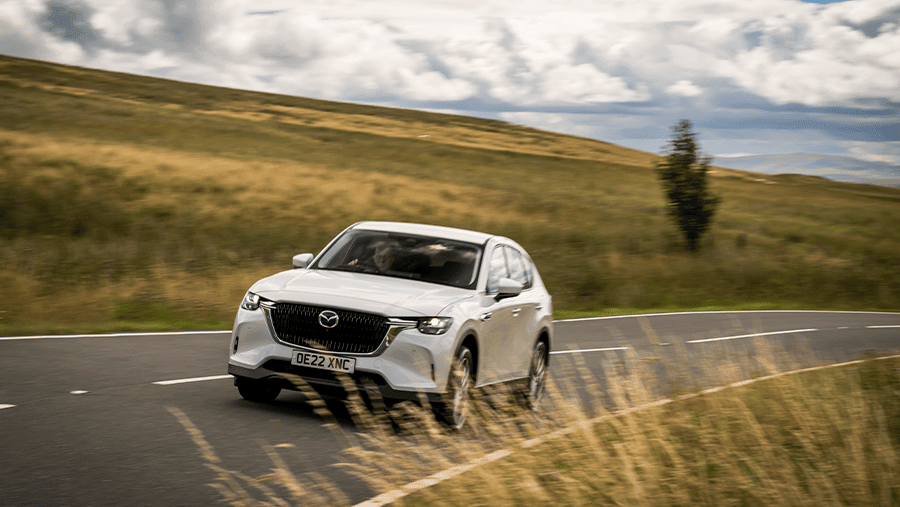
Key Features
The CX-60 range is straightforward and comes in three trims.
The entry-level Exclusive-Line gets 18-inch alloys, a 12.3-inch infotainment touchscreen with Apple CarPlay/Android Auto, a DAB radio, and a 12.3-inch digital instrument display. It also swanks black leather trim with heated front seats, a reversing camera, rain-sensing wipers, dual-zone climate control, electric windows and a ton of safety kit.
The mid-range Homura trim features 20-inch black alloys, heated outer rear seats and ventilated front seats, a Bose premium sound system and power-folding door mirrors. The car also vaunts electric driver and front passenger seats and a driver adjustable lumbar support. If that’s not enough, then there’s a powered tailgate, plus mesh metal interior styling.
The flagship Takumi grade sits on silver and black alloys, and houses white Nappa leather seat trim and white maple wood interior styling.
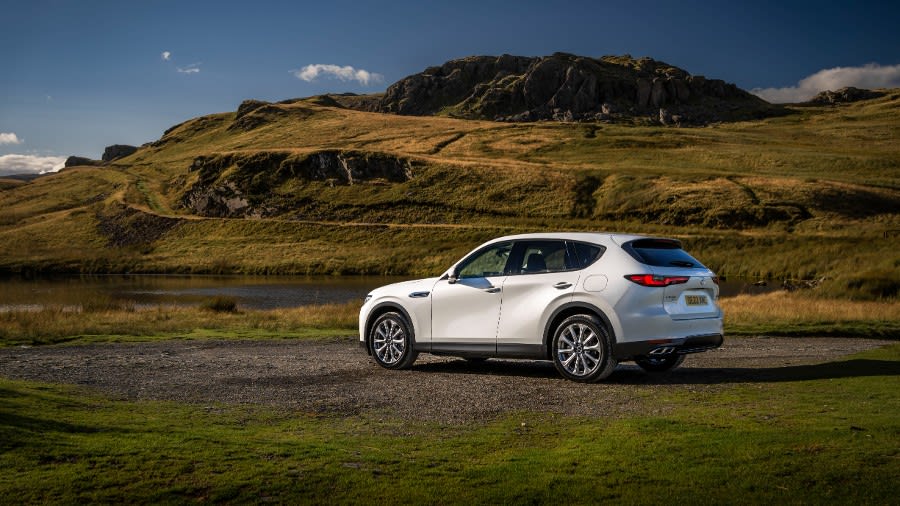
Regarding powertrains, one is offered as a plug-in hybrid – a 2.5-litre petrol connected to an electric motor for a combined 327 PS, complete with all-wheel drive.
The CX-60 was also the first Mazda to be offered as a plug-in hybrid.
But that’s not the unusual surprise.
The secret is the other engine in the range: it’s a 3.3-litre six-cylinder diesel engine.
No, that isn’t a misprint.
In a world that's now dominated by reductions in engine size, resulting in an endless sea of 1.3-litre petrol plug-in hybrids or 2.0-litre petrols and diesels, we repeat: Mazda has ushered in a 3.3-litre six-cylinder turbocharged diesel.
And this isn’t a throwback to the past with Mazda reintroducing something from its scrapyard. Instead, this is a brand-new powerplant – and, not only that, but there's also a 3.0-litre petrol coming soon.
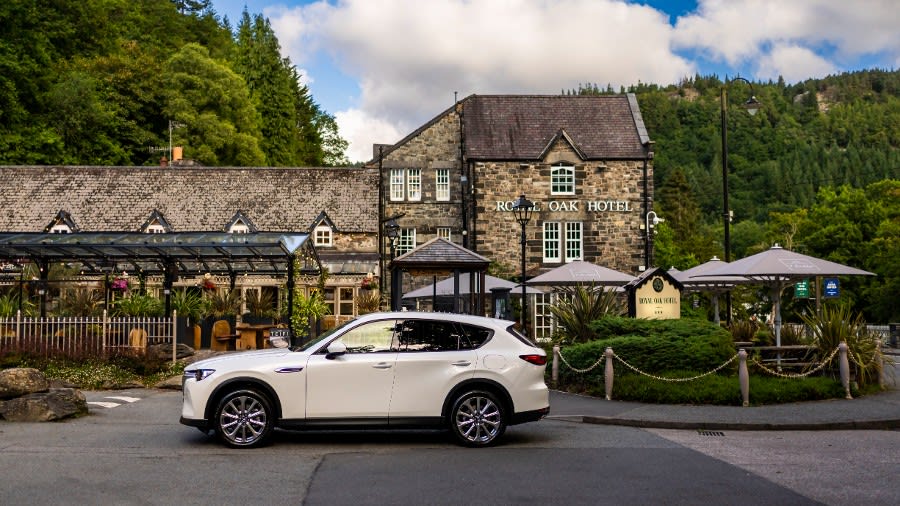
The 3.3-litre diesel is available with two power outputs. The rear-wheel drive version produces 200 PS, but with all-wheel drive, it's 254 PS – and the rear-wheel drive edition is only available on the entry-level Exclusive Line trim.
Both, along with the hybrid, come with eight-speed automatic gearboxes.
So, what in the world has possessed Mazda to do such a thing in 2023?
Well, believe it or not, there may be a method to the apparent madness.
By using a 3.3-litre lump and combining it with an innovative fuel injection system, it can do what it needs to do without asking too much of the power unit. This means it doesn't need to utilise higher revs, which significantly increase fuel consumption.
It is slightly more complicated than that, but that's the layman's explanation.
Either way, Mazda insists that its calculations mean this 3.3-litre engine will be more economical than if it were a more ‘normal’ size by today’s standards.
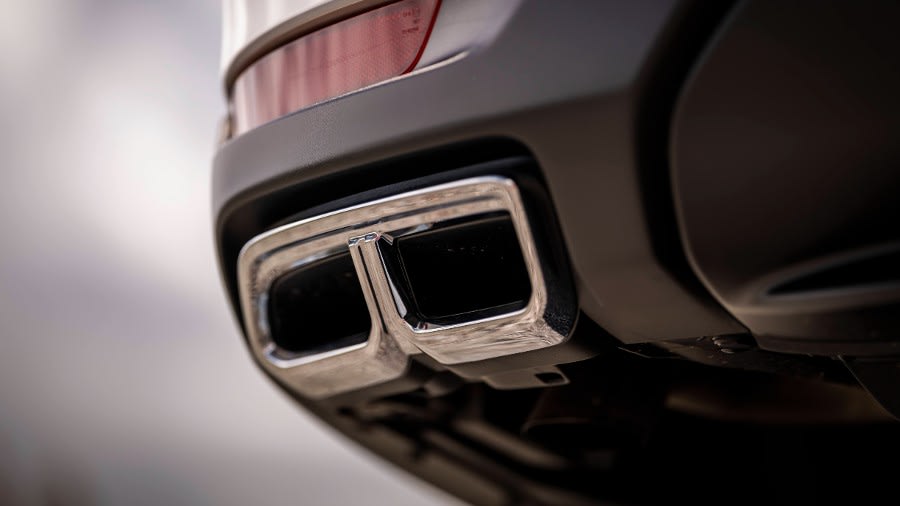
Performance & Drive
We are itching to try this 3.3-litre diesel then – and we get the higher-powered version of it with all-wheel drive, testing out both the mid-range Homura and the top-of-the-range Takumi trims.
We did briefly get behind the wheel of the 200 PS diesel in the entry-level trim, too.
If we're blunt, it's more than capable enough not to need anything more, as the torque under acceleration is impressive, and it more than suffices, with a 0-62mph time of 8.4 seconds.
The 254 PS shaves a second off that time, and, for us, that's not enough to justify the fairly hefty price difference between the two – in fact, the higher-powered variant is more expensive than the plug-in hybrid.
Nevertheless, our main test drive is in the high-powered one, which behaves similarly and feels a little bit punchier than the 200 PS version.
The plug-in hybrid, though, is the one to go for if you want poke, as it reduces the 0-62mph time to 5.8 seconds.
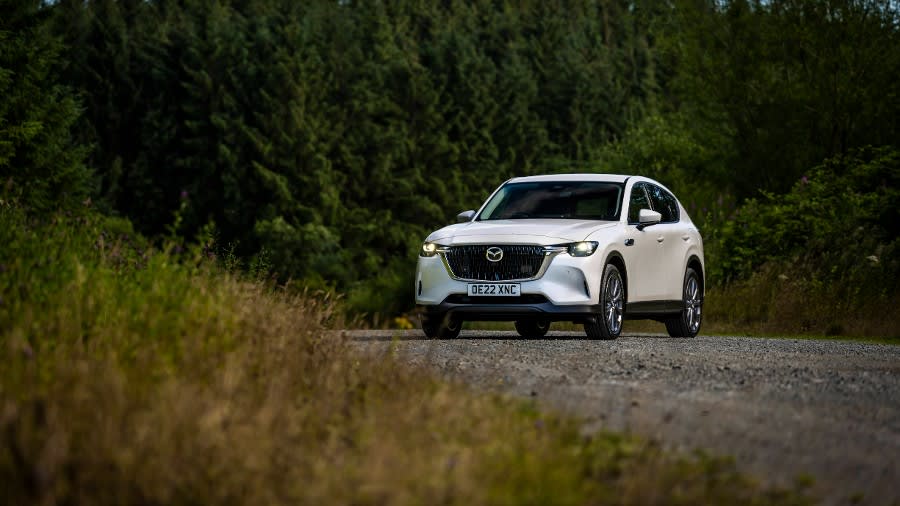
Our mischievous side loves those figures, but, in all honesty, it's overkill, although it may appeal to company car drivers.
Unless you need to take advantage of the PHEV's economy for tax reasons, or unless you need all-wheel drive, then we have to advise you to stick to the 200 PS engine, which is more than adequate to meet most people's needs.
The ride comfort isn't the best we've experienced, mainly because the suspension has been set up for firmness.
Whereas a 3.3-litre diesel will likely attract keener drivers, given nearly all its competitors are doing away with larger engines, it’s also set up to limit body lean in the corners, which it's remarkably adept at doing.
As a result, it feels engaging to drive, and thanks to the impressive amount of feedback through the steering wheel, tackling twisty backroads in the countryside promises to be an exciting experience, at least by SUV standards.

The eight-speed transmission is alright, but Mazda has configured it so that it changes early on, avoiding using higher revs for fuel-saving purposes, so expect lots of gearchanges every time you accelerate.
That may get a bit tiresome if you're continually going up and down in terms of speed, but those taking longer higher-speed motorway cruises won't mind. And, besides, it's an automatic, so it won't cause you any extra work.
As we indicated, though, this cool handling comes with drawbacks in the ride comfort department.
You will find plenty of forgiving rides elsewhere, as even small pocks in the road surface send a bit of a thump through the chassis.
Choosing the entry-level grade will reduce the size of the alloys by two inches, and that’s what we recommend.
Both the diesels sound quite gravelly, in all honesty, but we were so intrigued by an economical 3.3-litre that it wasn’t enough to put us off.
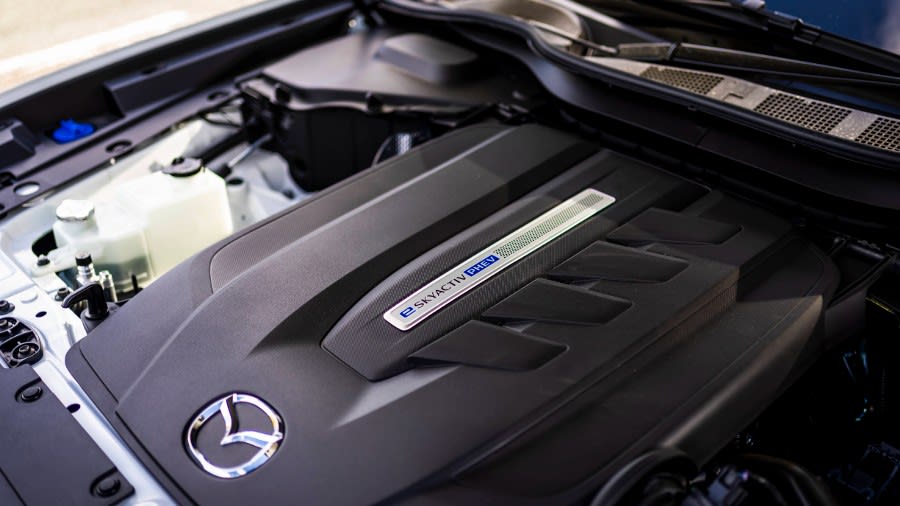
Running Costs & Emissions
Given a manufacturer launching a brand new 3.3-litre diesel is a pretty leftfield thing to do nowadays, we were intrigued by what the fuel economy figures would be.
We were, therefore, dumbfounded to discover that, in 200 PS form – and accounting for its size – it manages 56.5 mpg, producing just 129 g/km of CO2.
Even more impressively, the figures are only marginally inferior in the higher-powered 254 PS model, returning 54.3 mpg and 138 g/km of CO2.
These numbers even beat some of its foes who use just 2.0-litre engines, justifying Mazda’s reasoning for building it in the first place.
Of course, while these figures are impressive, it doesn't come close to the plug-in hybrid's figure of 188.3 mpg and 33 g/km of CO2.
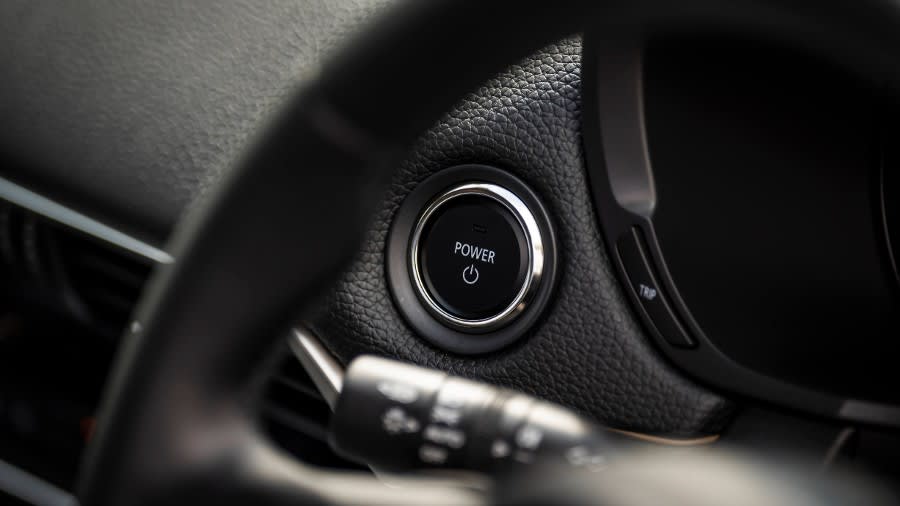
The PHEV also has an all-electric range of 39 miles from its 17.8 kWh battery, which charges from 0-100% in under eight hours from a domestic three-pin socket or in around two-and-a-half hours from a 7.4 kW home wall box.
Company car users will be more impressed by the latter, mainly due to the savings in Benefit in Kind tax. But then some of its challengers are in an even lower bracket as they have a more extended range when using just the electric motor.
As for reliability, Mazda is regarded as one of the more dependable brands. But it still only comes with a bog-standard three-year, 60,000-mile warranty – not that that will bother you when you’re leasing.
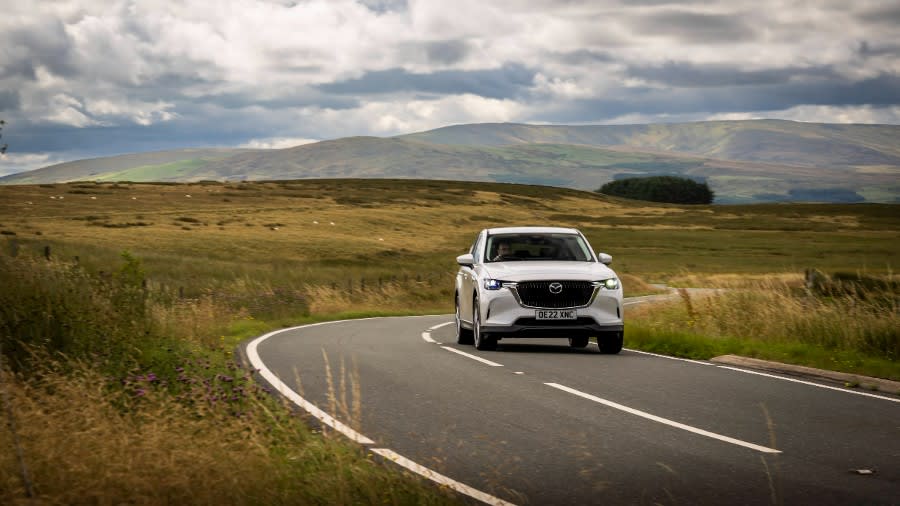
Interior & Technology
The interior is charming and has a sufficiently premium feel to it.
This is especially true in most expensive Takumi trim, which features the white Nappa leather interior - adding a natural air of additional sophistication to the cabin.
Even the switches feel nicely weighted and expensive.
While it lacks the outright ostentatiousness of some modern-day Mercedes-Benz cabins, it's well-designed and offers a generous amount of plush, soft-touch materials.
The air vents and the physical climate control dials sit in the centre with a hexagonal surround, while the 12.3-inch infotainment screen looks wide, peering over the top of the dashboard.
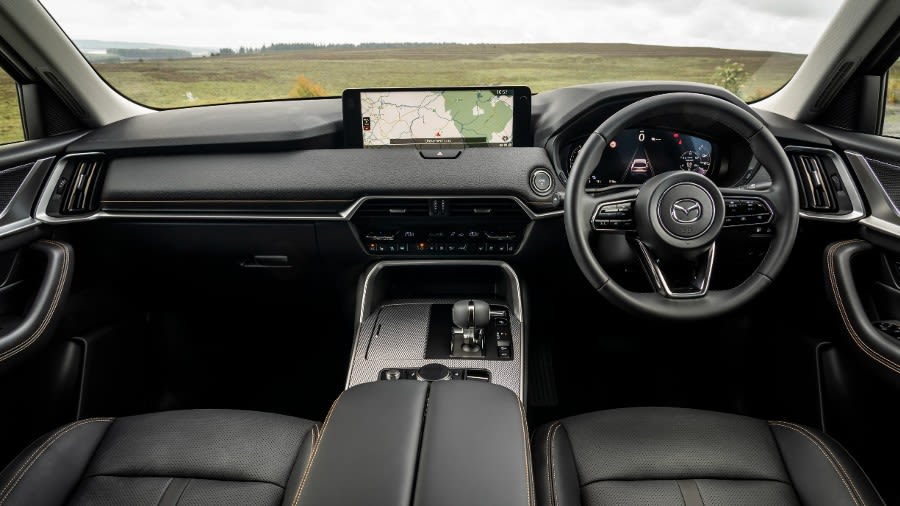
The system is notable, too, with a clear and sharp touchscreen that's alert and has intuitively laid out menus.
Mazda has been consistently good at this since it first introduced a touchscreen in its vehicles.
The digital instrument display is a different shape. Still, it provides a lot of helpful information, but there's not an awful lot you can change on it.
One nice feature is that the Homura and Takumi trims feature facial recognition, which automatically ensures all your preferences and settings load up. This tech is helpful if you regularly share the driving with someone else.
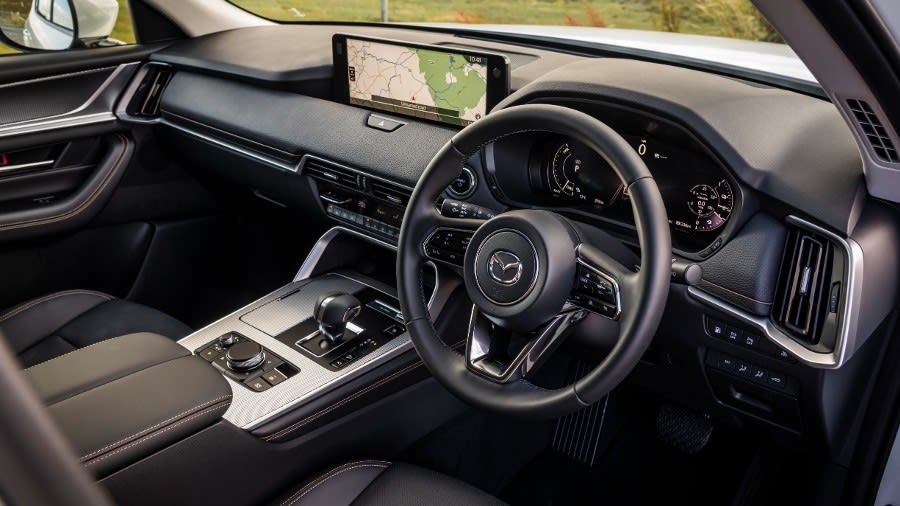
Practicality & Boot Space
If you avoid the entry-level trim, you’ll get electric front seat adjustment, which makes finding a comfortable driving position simple.
There is a load of room up front, and you won't feel like you're rubbing shoulders with the person sitting next to you, and there's plenty of headroom and legroom, too.
You sit relatively high up, maximising front visibility, helped by the reasonably thin pillars on either side of the windscreen.
As is the case in most cars, the pillars are thicker at the back, and their angle reduces your view. But front and rear parking sensors, plus a reversing camera, are included as standard on the CX-60, regardless of trim. It is also worth noting that the camera displays its image on the infotainment touchscreen.
In the back, there's plenty of space to accommodate two adults comfortably. And although three will fit, it's a squeeze.
If you're sat in the rear and are tall and have a loftier person in the front, you may find the rear seats lack a bit of legroom.
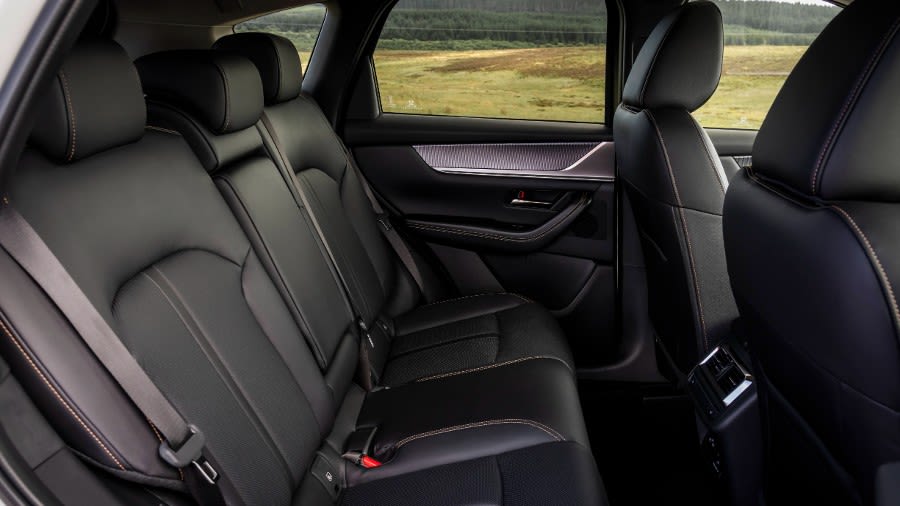
There is an optional panoramic sunroof, which will reduce the height of the ceiling somewhat, so that’s something to bear in mind if you are vertically unchallenged.
In terms of storage space, there are heaps of places to store sunglasses and drinks, with a couple of cupholders, fairly big door bins and a generously sized glove compartment.
Boot space is measured at 570 litres, expanding to 1,726 litres with the rear seats down, which is even bigger than an Audi Q5's.
The plug-in hybrid version only gets 477 litres, although Mazda claims this still increases to the full 1,726 litres with the back seats down. These chairs fold down in a 40:20:40 split, offering more convenience and versatility compared with some opponents.
The boot floor is flat, too, so sliding larger and heavier items in and out is easy, thanks to the lack of a load lip.
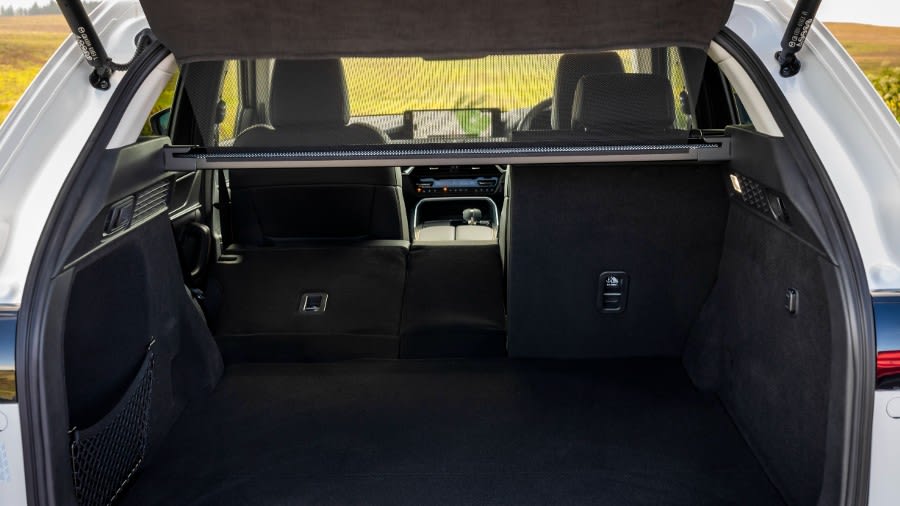
Safety
The Mazda CX-60 was put through its paces by Euro NCAP in 2022 and was rated at the maximum of five stars.
It earned an 88% score for adult occupants, 91% for children and 76% for safety assists.
Aside from the obvious things like seatbelts and airbags, safety technology includes blind spot monitoring with rear cross-traffic alert, cruise control and driver attention alert. The CX-60 also features hill launch assist, lane departure warning and lane-keep assist, plus traffic sign recognition.
All these aids are included as standard across the range, which is a remarkable amount of safety tech to get at entry-level.
The Homura and Takumi trims also get a driver monitoring system.
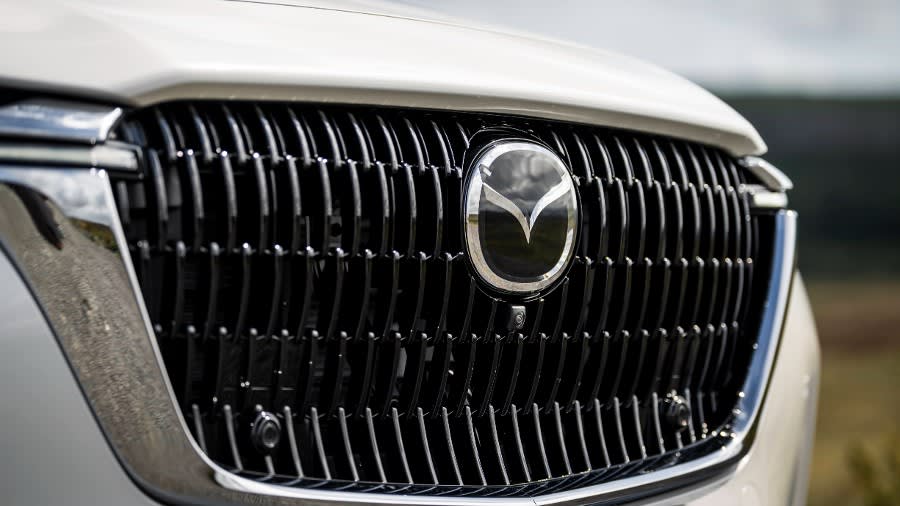
Options
Mazda provides a vast array of combinations when it comes to optional extras.
A lot of features are available individually, but quite a few are clumped together in 'packs', most of which are four figures.
The Comfort Pack is available for the Exclusive Line trim. It includes several features that come as standard on the higher grades, with 20-inch alloys, door mirror memory, electrically adjustable front seats, front seat ventilation and heated outer rear seats.
You also get the facial recognition system we mentioned earlier.
These are very nice features, although if comfort is the priority, we'd suggest sticking with the smaller 18-inch alloys.
For the plug-in hybrid, there’s also a Convenience pack with a 360-degree monitor, wireless charging and some interior lighting improvements, and a Driver Assistance Pack with various additional safety features.
The top two grades, Homura and Takumi, can also have a panoramic sunroof, although this is only available with the plug-in hybrid in the Takumi trim.
Aside from that, there’s a seemingly endless list of accessories, from tyre valve caps to key covers, roof racks and charging cables, to choose from.
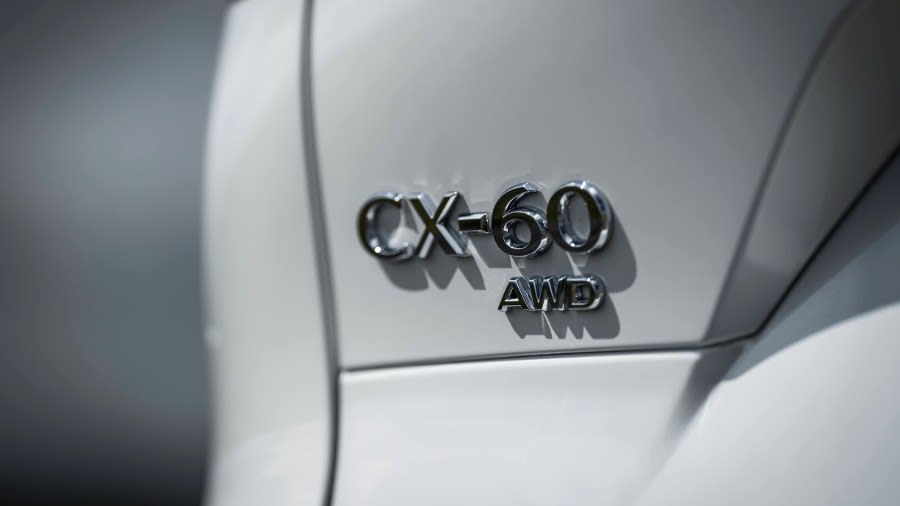
Rival Cars
Naming the Mazda CX-60’s competitors is tricky because it looks like a premium car, both inside and out.
The Japanese automaker may hope it’s a match for the Audi Q5, BMW X3 and Mercedes-Benz GLC.
It is also going up against the Volvo XC60 and the Lexus NX.
We would also encourage you to check out the Hyundai Sante Fe, which has the added convenience of being a seven-seater.
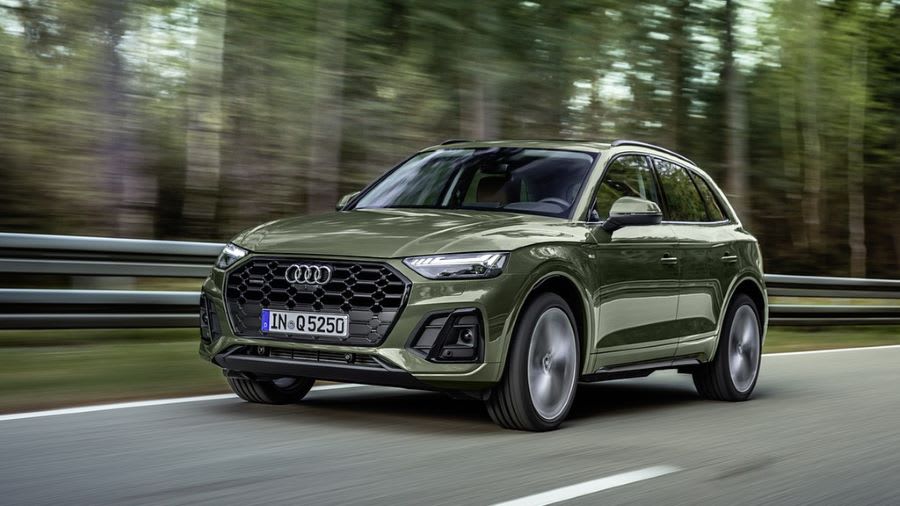
Verdict & Next Steps
Overall, the Mazda CX-60 is a remarkable SUV that should be considered, even if you're going after a premium brand car.
It handles very well for a vehicle of its size, and the introduction of the superbly economical diesel has amazed us – and Mazda has pulled it off with aplomb.
It has got good looks, a sophisticated and well-designed interior and comes very well-equipped as standard.
It doesn’t quite match up to the likes of BMW and Audi in terms of sophistication, but it does give the best in class a good run for their money.
However, the CX-60 isn’t the most spacious SUV, and the ride is on the hard side, especially on the larger alloys of the Homura and Takumi trims. On that note, those two grades are significantly more expensive.
Meanwhile, the Exclusive Line has generous equipment levels, including nearly all the same safety features. So, on balance, we'd save our money and stick with the entry-level model.
We would likely opt for the lower-powered 3.3-litre diesel, too, which has more than enough grunt to meet the needs of most.
So, make no mistake: the CX-60 is a serious contender – and successfully introducing a 3.3-litre diesel engine in 2023 might be the shock of the year.
Where to next?
View our latest Mazda CX-60 lease deals, from £403.79 per month**.
Call us on 0118 3048 688 or hit the green 'Enquire' button for more details.
Looking for a great deal? Check out our incredible range of car lease deals
New hatchback? Read our latest Car Reviews and find the right model for you
Want to know more about leasing? Take a look at our comprehensive Leasing Guides
Interested in everything motoring? Why not catch up on all the latest Car Leasing News.
*Score based on Select’s unique meta score analysis, taking into account the UK’s top five leading independent car website reviews of the Kia Soul EV.
**Prices include VAT. Based on 9 months initial payment, 5,000 miles over a 24 month lease. Initial payment equivalent to 9 monthly payments or £3,634.11. Credit is Subject to Status, Ts and Cs and Arrangement Fees apply. Excess mileage may apply. Stock levels and prices correct as of 10/05/23.




















